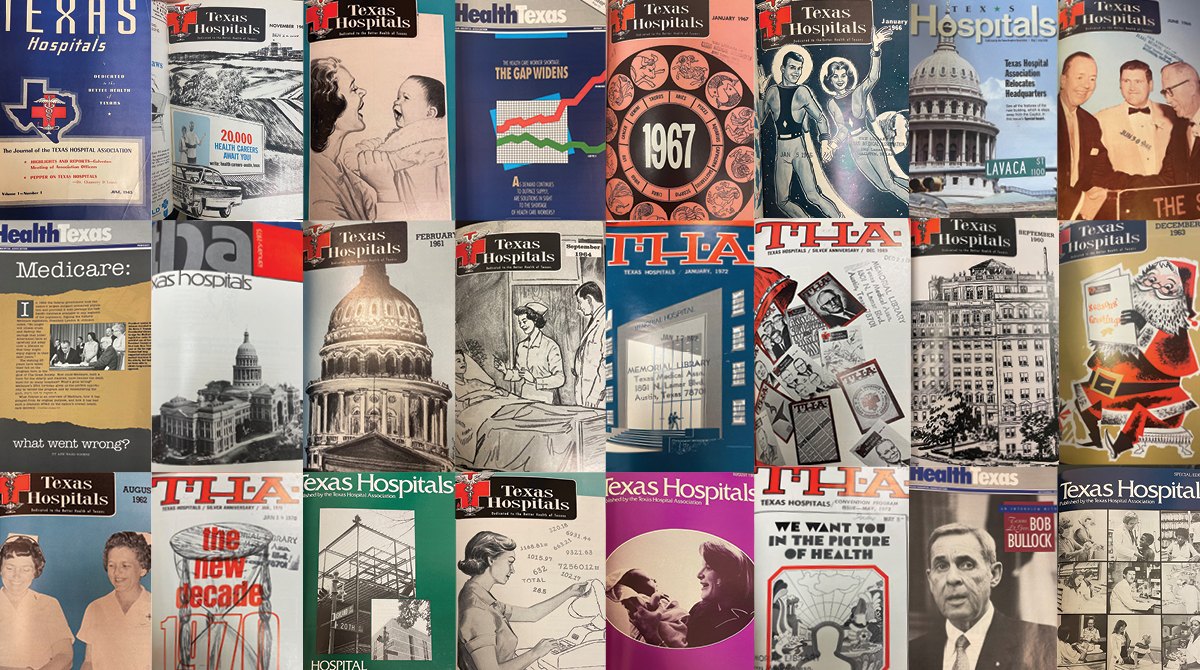Since its founding in 1930, the Texas Hospital Association prides itself on providing timely communications to its members. Like any organization that has been around for nearly 100 years, it had to adapt its stakeholder communications with the times. As the internet, emails and social media gained more widespread prevalence, print communications like magazines become outdated quickly and more costly to produce.
For the past 77 years, THA has used Texas Hospitals magazine to share the latest advocacy news impacting Texas hospitals, member accolades and state, national and worldwide events that impact health care delivery.
Before we close this chapter that spans across wars, epidemics, medical triumphs and tragedies, look back at some of the most poignant moments in history captured by THA’s longest-standing print publication.
TO THE BETTER HEALTH OF TEXANS
In its opening dedication, published in June 1945 at the tail end of World War II, the Texas Hospital Association introduces its first print publication, Texas Hospitals, to its members. The magazine’s first sentences read:
“Texas Hospitals may be dedicated appropriately ‘To the Better Health of Texans, as any progress made by an individual hospital or by the hospital association is a step toward this most worthy goal.”
“There are 525 hospitals in Texas. Many of these hospitals, according to a survey, receive no subscribed hospital publication. Texas Hospitals is not a substitute for the splendid publications which are available on subscription.”
The primary feature of the first edition recaps THA’s 1945 annual conference, which took place in Galveston. Due to travel restrictions enforced by an obscure and now inexistent federal agency called the U.S. Office of Defense Transportation, the 1945 THA conference was only attended by “the official family of the Association, numbering slightly under 50 persons.”
Published three and a half years into the second World War, the first edition of Texas Hospitals brims with wartime content for its readers, such as updates on the Nurse Draft Bill, post-war expansion of hospitals and the prevalent meat and cloth shortages that impacted Texas hospitals at the time. The issue also features a special tribute to the hospitals and health care workers who were serving their country at home and abroad.
“The challenge which the medical profession and other members of hospital staffs have accepted and met so brilliantly involves a service on two indispensable fronts, on the home front and on the battle front. The one is no less important, no less indispensable than the other.”
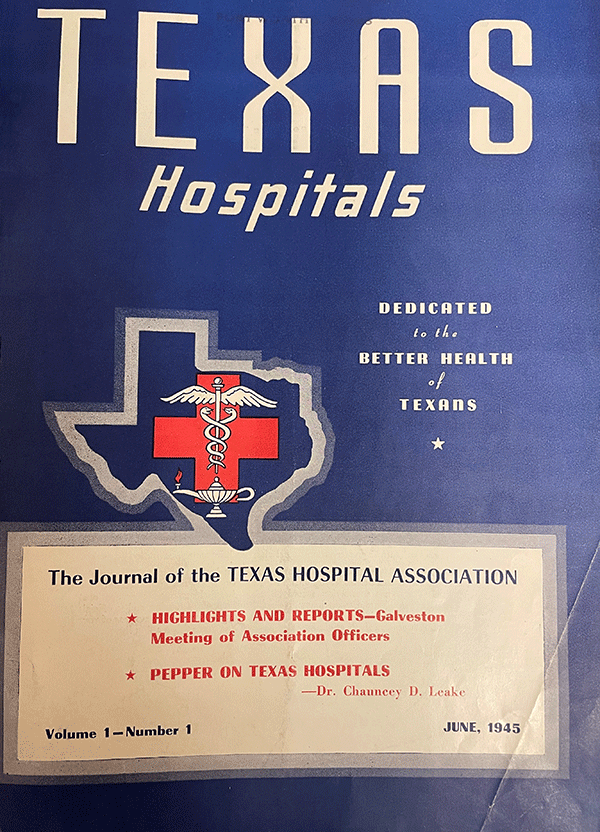

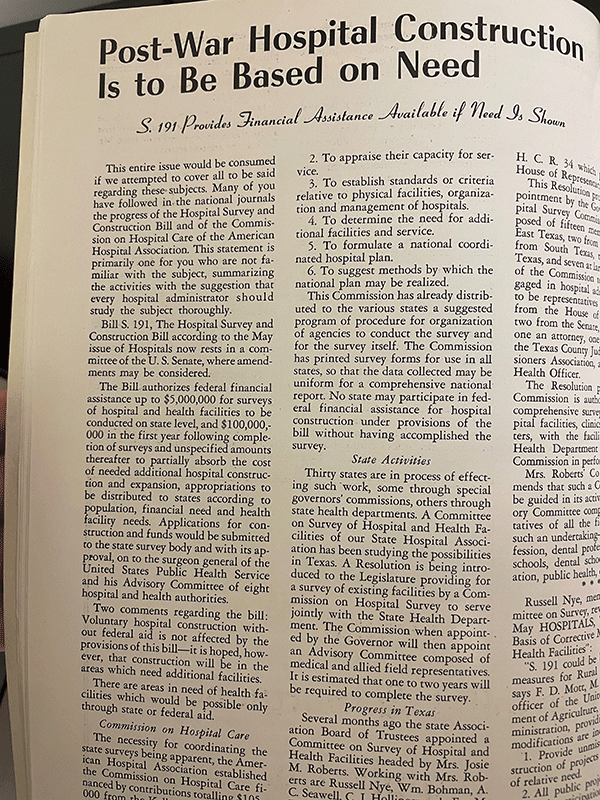
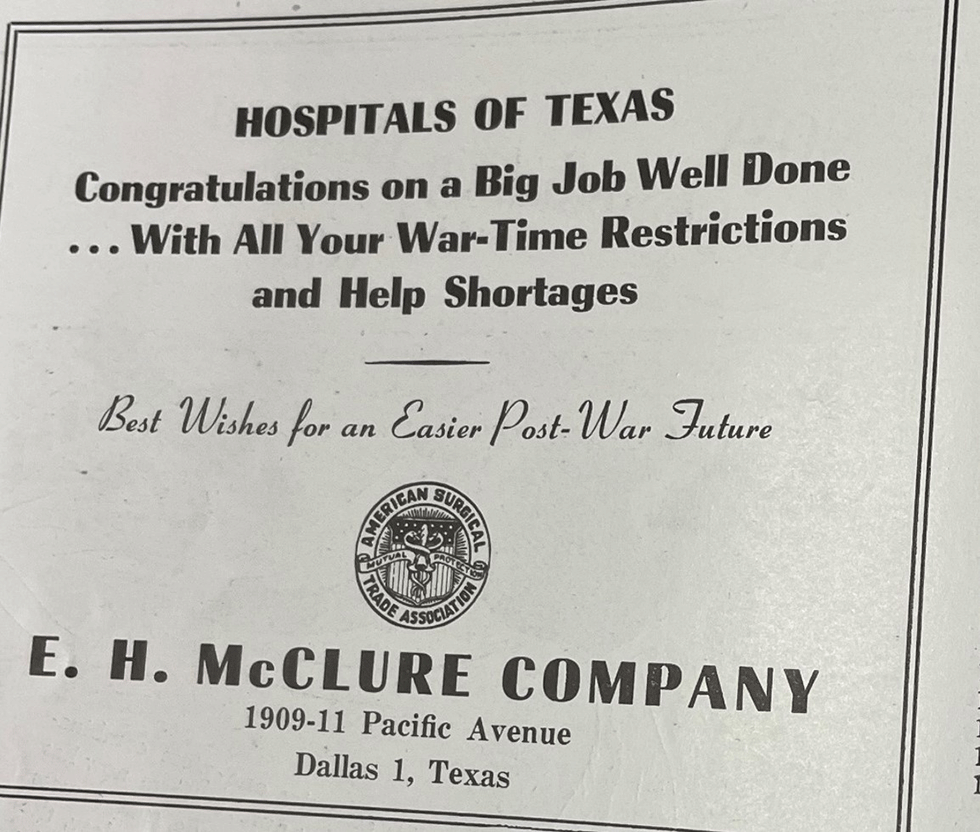
TEXAS HISTORY AND HOSPITALS
As the state with the most hospitals, many of Texas’ modern historical events were inextricably tied to the hospital industry.
1961 Manned Spacecraft Center Opens in Houston, Texas
On Sept. 21, 1961, NASA announced that the Manned Spacecraft Center would be located in Houston, Texas. As the country prepared to send man to the moon, which eventually happened in 1969, THA took advantage of the attention around the burgeoning aeronautics industry to promote a career in health care with the January 1966 cover story.
1966 University of Texas Tower Shooting
On Aug. 1, 1966, a gunman took rifles and other weapons to the observation deck atop the main building tower at the University of Texas at Austin and opened fire indiscriminately on people in the surrounding area, killing 14 people and injuring 31. At the time, the attack was the deadliest mass shooting by a lone gunman.
THA addressed the tragedy in its September 1966 Texas Hospitals magazine by highlighting and commending the emergency preparedness of Brackenridge Hospital, which received 39 of the victims, in a feature story “Emergency Evaluates Disaster Plan.”
“Have a disaster plan and rehearse it,” was the advice of Ben Tobias, administrator of Brackenridge Hospital. “Having a plan and rehearsing it helped us in being able to carry through with the job we had to do.”
The issue also included a resolution adopted by the Austin City Council that recognized the Police Chief and Ben Tobias for their performance of duty under the most trying circumstances.
2005 Hurricane Katrina/Rita
In 2005, the Gulf Coast was hit with a one-two punch of Hurricane Katrina, then Hurricane Rita. When Texas hospitals were struggling to help Katrina evacuees, Hurricane Rita made landfall in the Beaumont/Port Arthur area. The November/December 2005 issue of Texas Hospitals provided a regional update of the hospitals impacted by the hurricanes with testimonials from member hospital executives.
THA established a Hurricane Rita command center that was manned 24 hours per day from Sept. 21-24, 2005 to provide hospital members with information and resources needed to weather the storm. The July/August 2006 issue of Texas Hospitals was published during peak hurricane season and shared disaster managers’ lessons learned from 2005.
2017 Hurricane Harvey
When Hurricane Harvey, a devastating Category 4 hurricane, made landfall along the Gulf Coast in August 2017, Texas hospitals were prepared for the worst. After all, storms like Hurricanes Katrina, Rita and Ike wreaked havoc that impacts hospitals for years afterwards.
Texas hospitals that were in the storm’s path endured over a week of flooding, utility damage and an extended period of supply chain disruptions. Considering the extent of the storm’s reach and its seemingly unrelenting capacity to inflict damage, hospitals in Houston and surrounding areas stood stalwart and delivered patient care amid the storm.
2020 Winter Storm Uri
On Valentine’s Day 2021, Texans anxiously awaited the arrival of Winter Storm Uri, an ice storm that led to a major power crisis in Texas. Due to the complexity of the Texas grid, the storm had a catastrophic impact on many Texans who experienced prolonged blackouts and water outages from Feb. 14 – 20, 2021.
Amid the storm and the ongoing pandemic, Texas hospitals showed resiliency and strength. Health care workers continued to scrub in and care for others, even though many of them also faced power loss and damage at home.
2022 Uvalde Shooting
On May 24, 2022, a lone gunman entered Robb Elementary School in Uvalde, Texas, killing two adults, nine children and critically wounding 17 more. The aftermath highlighted South Texas hospitals’ emergency response, coordinated trauma care and the resilience of their staff and the state’s health care workers who came together to mourn, mend and heal a hurt community.
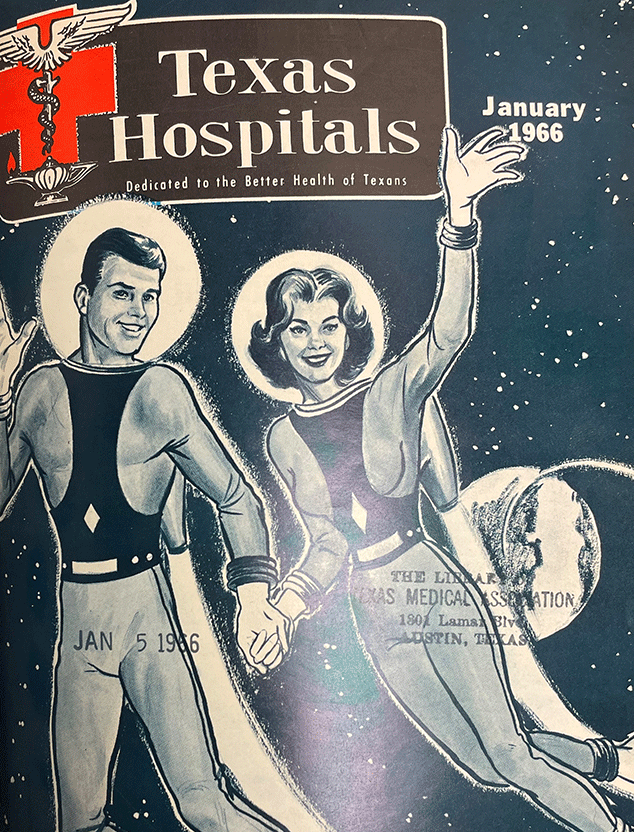
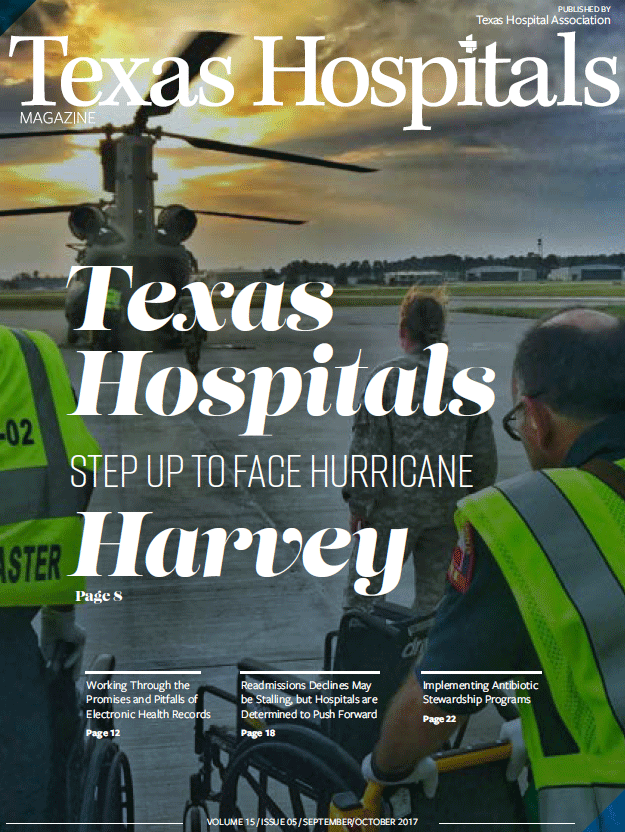
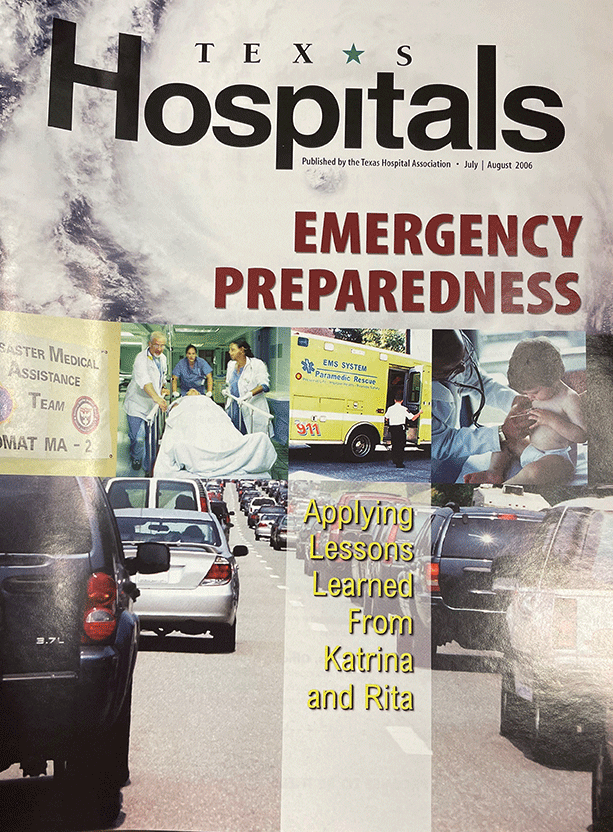
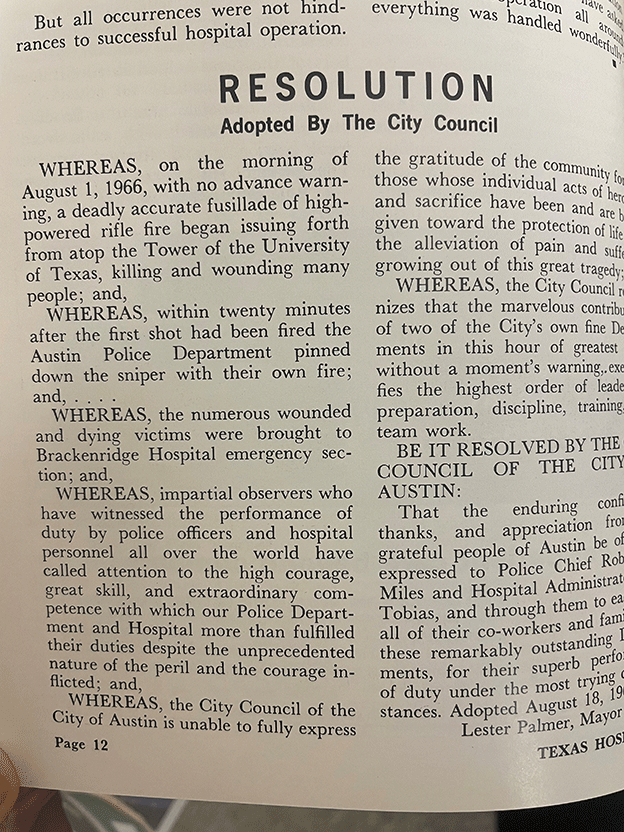
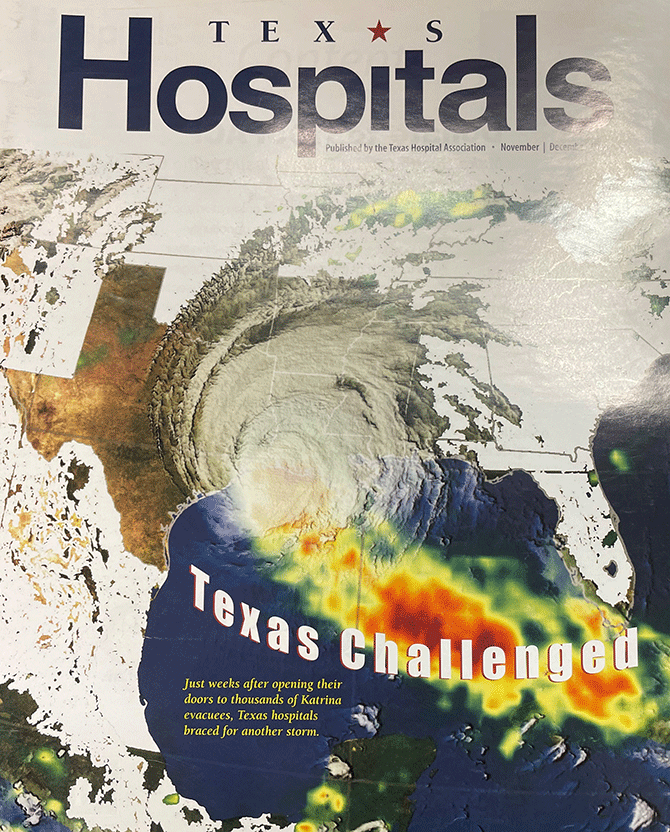
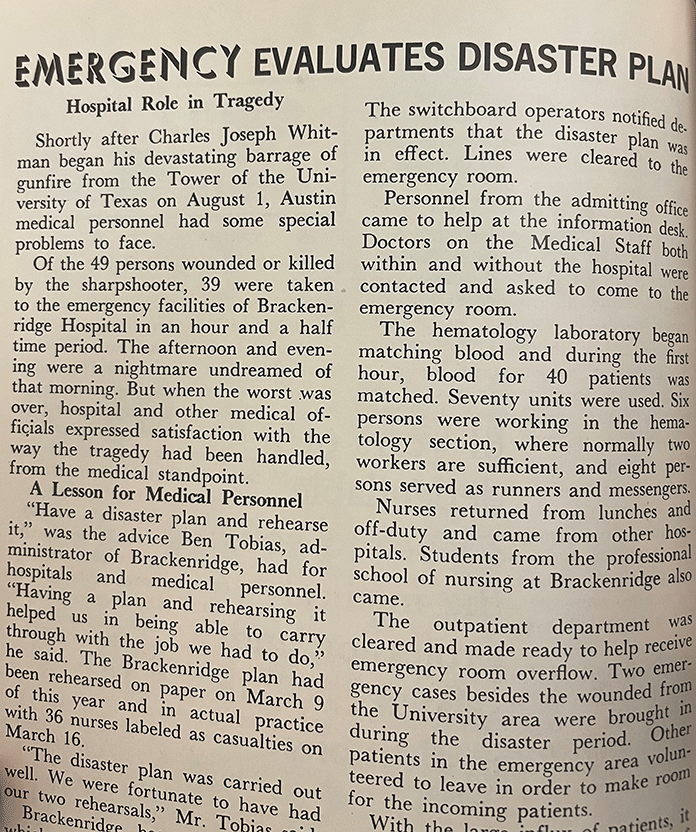


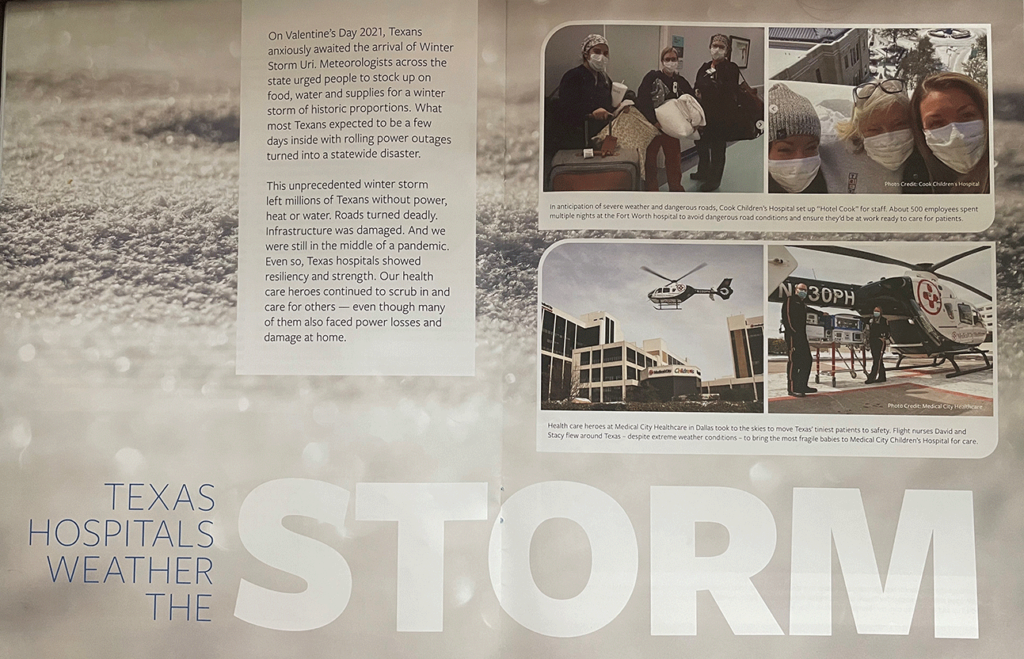
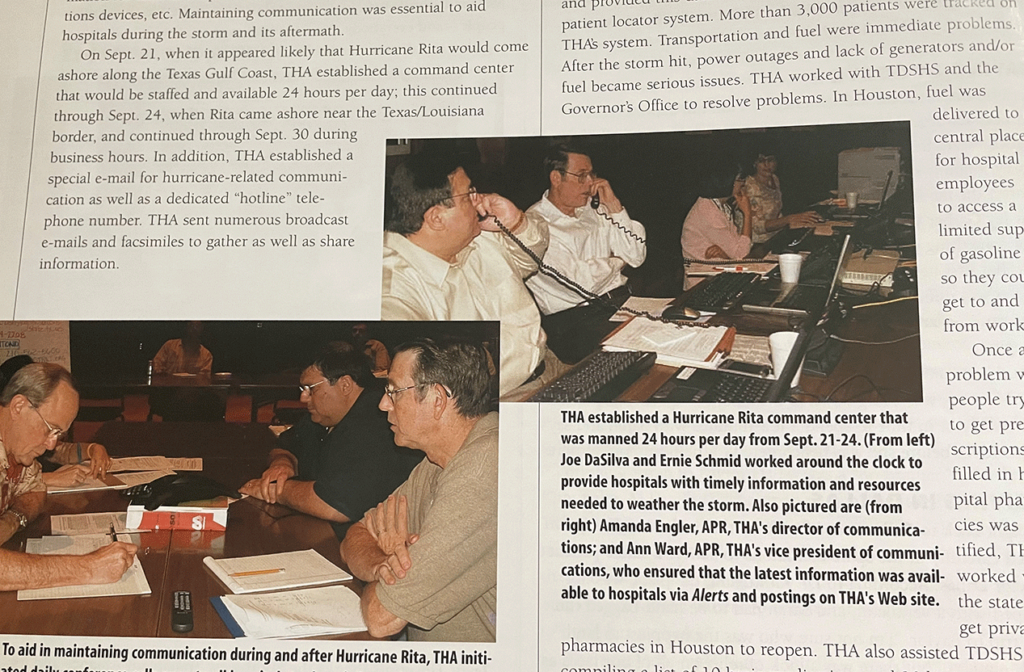
TEXAS HOSPITALS AND WORLD EVENTS
Hospitals are pillars in the communities they serve, looked to for safety and security during times of uncertainty. Throughout the past 77 years, Texas Hospitals kept readers well-informed of world events that impacted them.
1948-1955 Polio
Before the polio vaccine became available in 1955, several polio epidemics occurred in the U.S. between 1948 and 1955. Polio became a recurring topic in the early issues of Texas Hospitals going back to October 1945, which published the total cases of polio in the state by year.
The issue also featured an article on the need to find permanent and effective arrangements to care for polio patients. THA helped facilitate a meeting between the Texas hospitals that managed an influx of polio patients during the 1943 polio pandemic, state officials and representatives of the National Foundation for Infantile Paralysis to discuss potential solutions for long-term care.
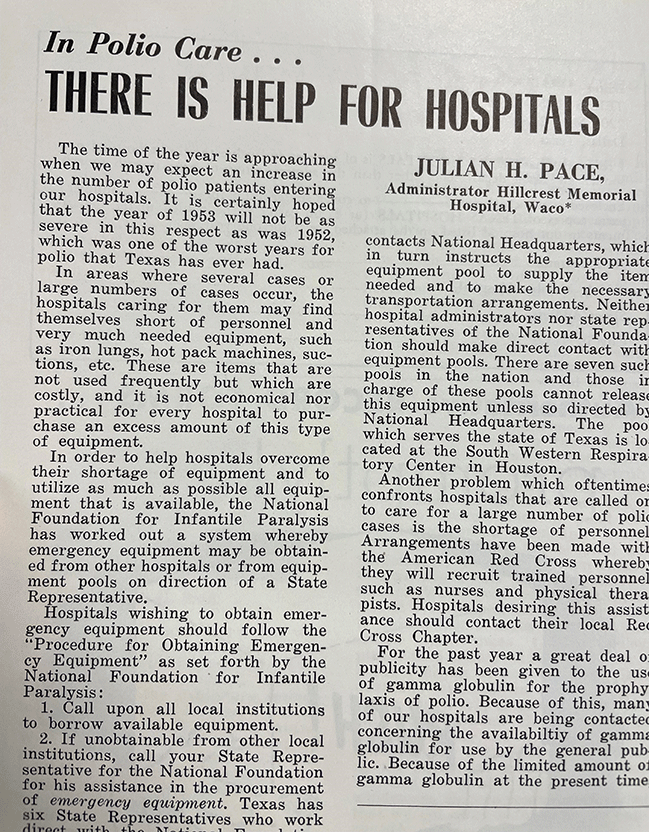
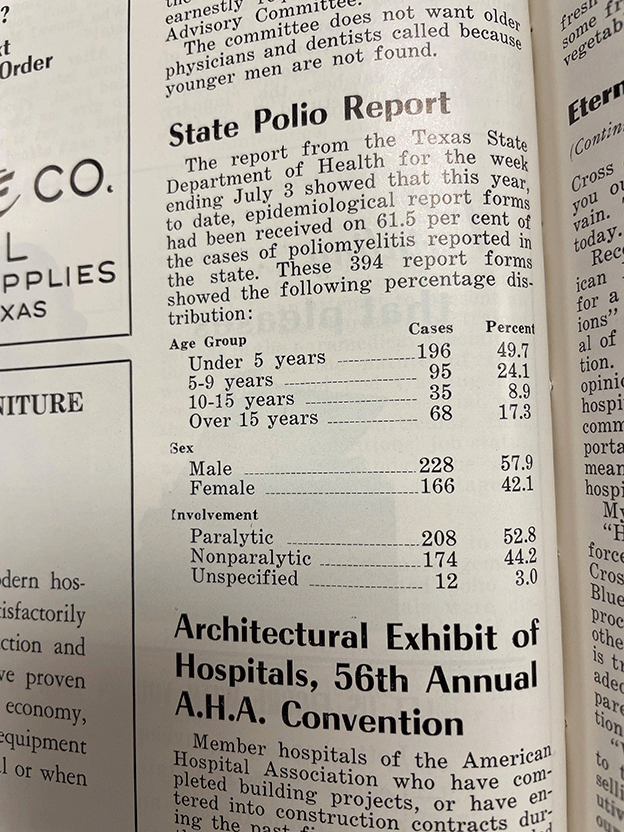
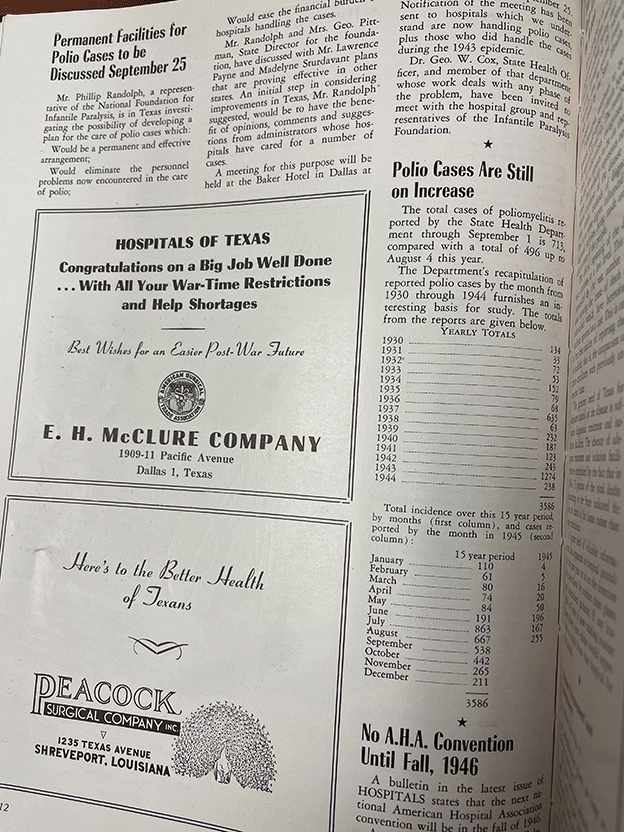
1956 Nuclear Bomb Threats
In 1956, the United States no longer had a monopoly on atomic bombs and the American public lived with the ever-present threat of nuclear annihilation.
The January 1956 issue of Texas Hospitals opens with a quote from President Eisenhower: “If the peoples of the world are to conduct an intelligent search for peace, they must be armed with the significant facts of today’s existence.” The issue was filled with emergency preparedness content for readers, such as “Evacuate or Expand: Survival Measures for a Hospital” and a special profile on civil defense emergency hospitals.
The issue also highlighted “Operation Mercy,” a simulated sabotage explosion at the Ideco plant in Beaumont, Texas. It was the city’s most extensive civil defense drill in history. The purpose of the test was to see how fast a complete mobile hospital could be assembled, transported to the scene of a disaster, and operate for six hours under its own power.
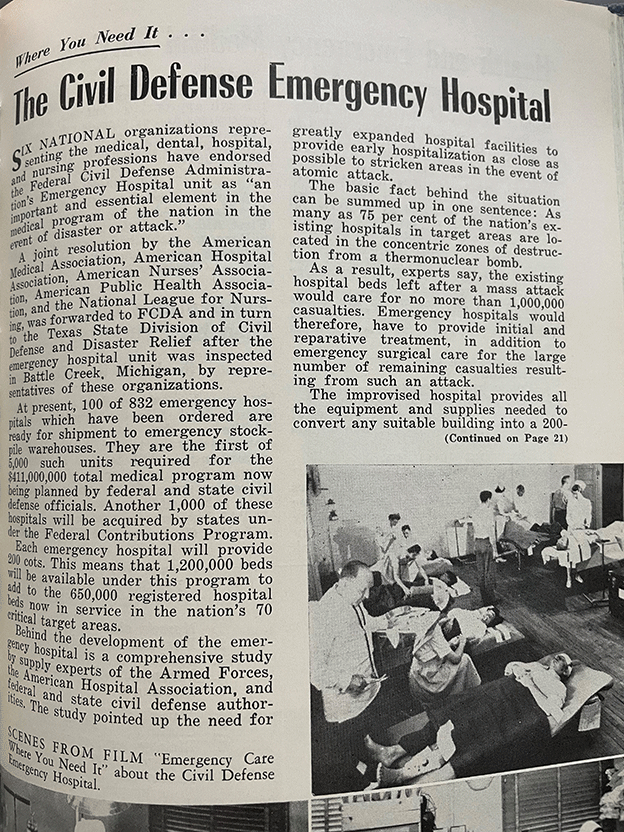
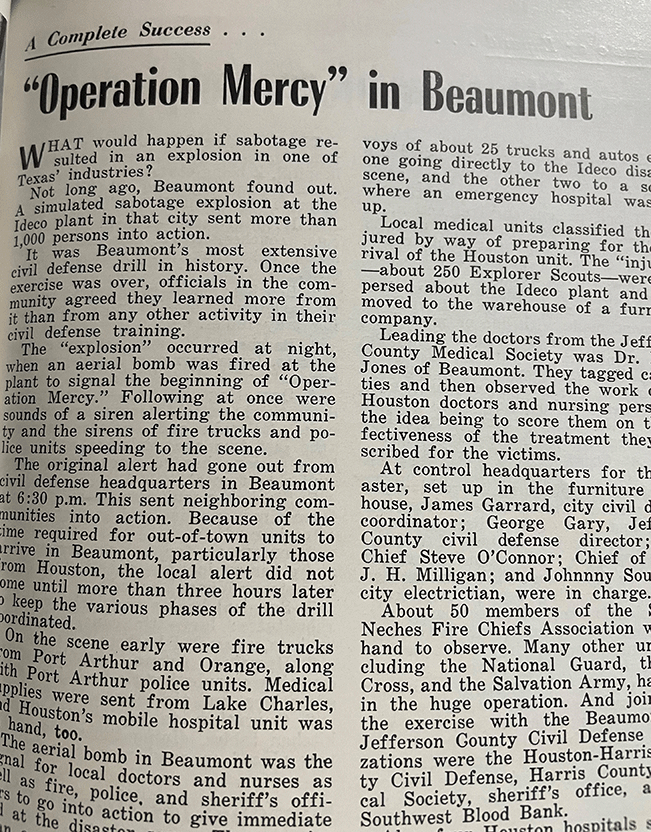
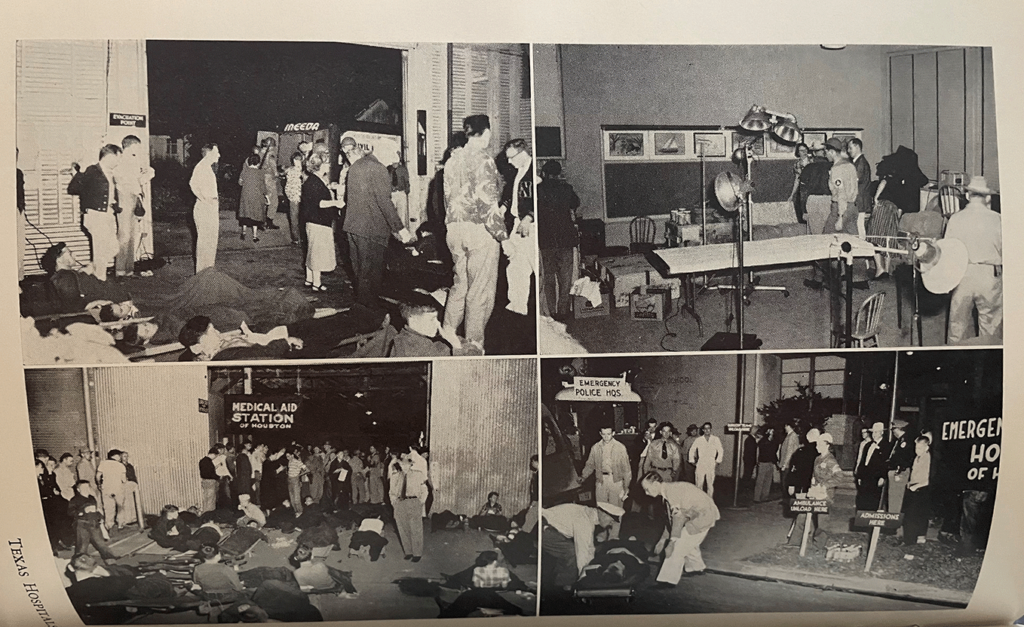
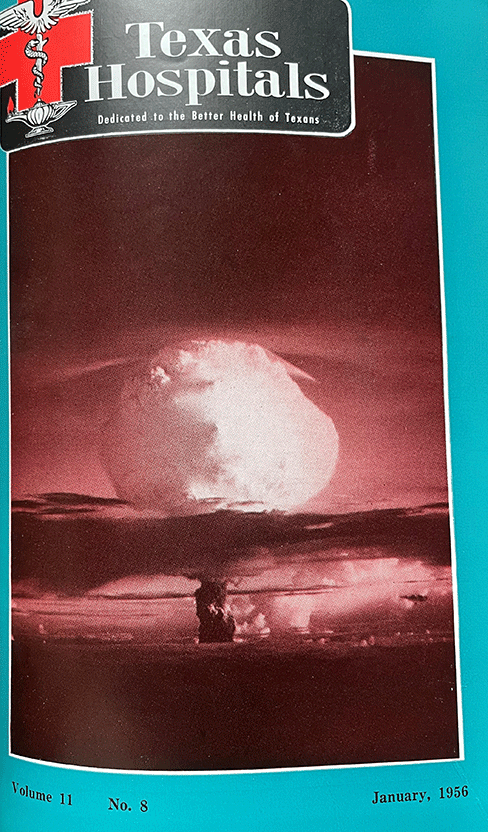
1990 AIDS
The first reports of unusual, fatal infections acquired by otherwise healthy, gay men was published in a June 1981 Morbidity and Mortality Weekly Report by the CDC. By year’s end, there was a cumulative total of 337 reported cases of individuals with severe immune deficiency in the United States. The condition was officially termed “Acquired Immune Deficiency Syndrome” (AIDS) by the CDC in 1982.
The February 1990 issue of Texas Hospitals highlighted the work of Omega House, which, at the time, was the only residential hospice for homeless, terminal-phase AIDS patients in Houston, which had the fourth highest number of AIDS cases in the country. The feature highlighted the outstanding need for organizations like Omega House to provide cost-effective palliative care for AIDS patients.
The September 1990 issue featured the work of Adan Rios, a Houston-based oncologist whose entire practice consisted of AIDS patients just six years after he treated his first AIDS patient. The issue also highlighted the affect that AIDS had on rural Texas hospitals that lacked the tax bases and community services of their urban counterparts.
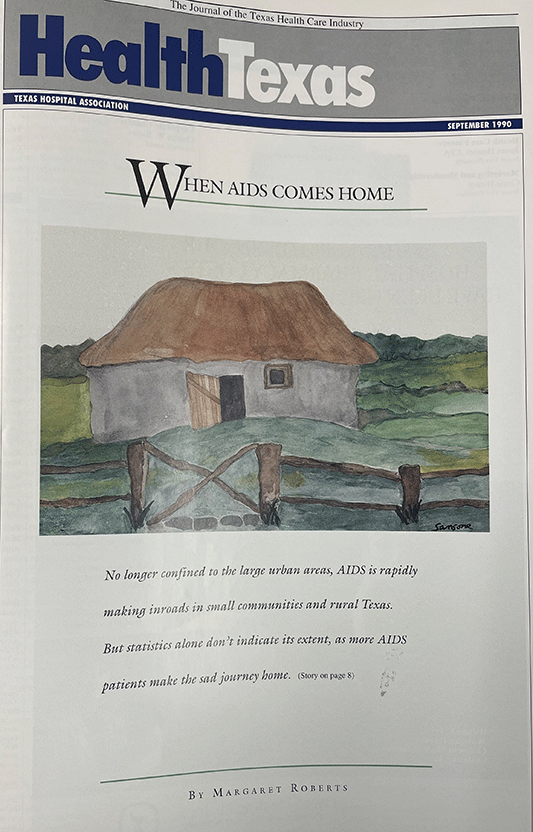
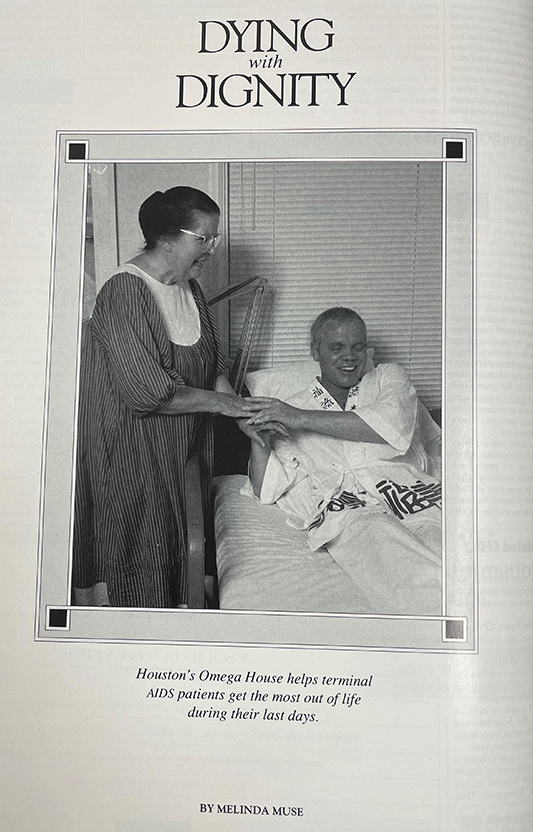
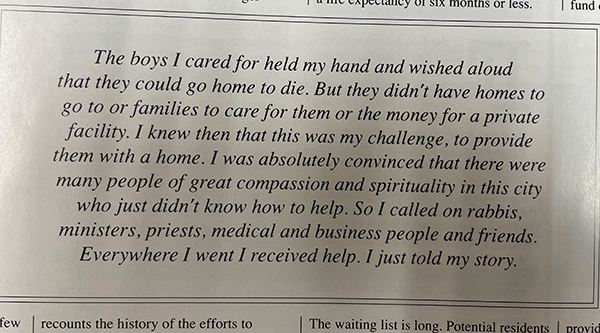
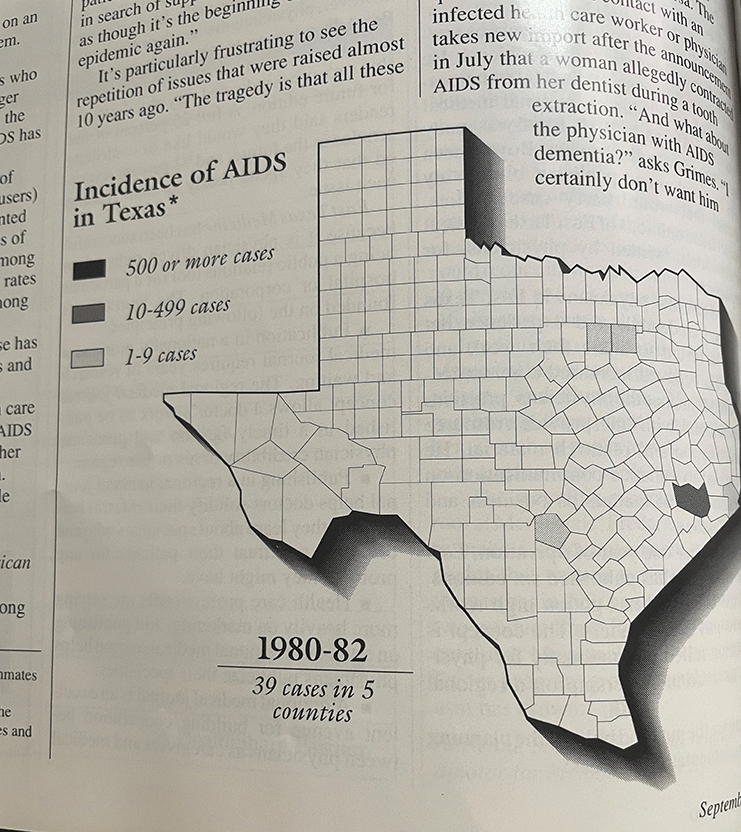
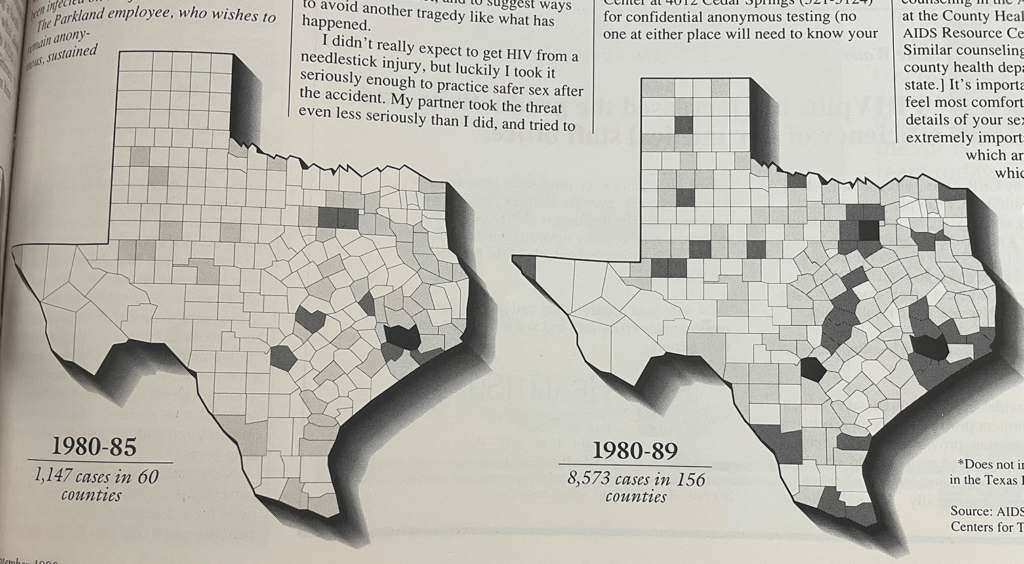
2016 ZIKA
An epidemic of Zika fever, caused by Zika virus, began in Brazil, and affected other countries in the Americas from April 2015 to November 2016. For those living on the Gulf Coast, there was an obvious growing concern of mosquito transmission.
The July/August 2016 issue of Texas Hospitals expanded upon the threat of the Zika virus in coastal states like Texas. At the time the article was published, there were 108 reported cases of the Zika virus in Texas that were attributed to travel. The issue focused on Texas hospitals’ efforts to protect at-risk populations like pregnant women by partnering with organizations and entities like Baylor College of Medicine National School of Tropical Medicine, Harris County Public Health, the Houston Health Department and the CDC.
2020 COVID-19
On March 4, Houston reported the first confirmed COVID-19 case outside of the evacuees at JBSA Lackland. Texas health officials linked the first cases back to passengers returning from a river cruise in Egypt. Soon, COVID-19 began spreading to other parts of the state. By March 9, DSHS confirmed community spread.
On March 11, the World Health Organization declared COVID-19 a pandemic. With cases in over 114 countries and around 4,000 deaths, COVID-19 became the first coronavirus to lead to a pandemic. Two days later, Gov. Greg Abbott declared a state of disaster for all Texas counties.
From the first COVID-19 cases in Texas, the arrival of a groundbreaking vaccine, mass vaccination sites and vaccine requirements for medical personnel, Texas Hospitals has documented the major moments of the COVID-19 pandemic.
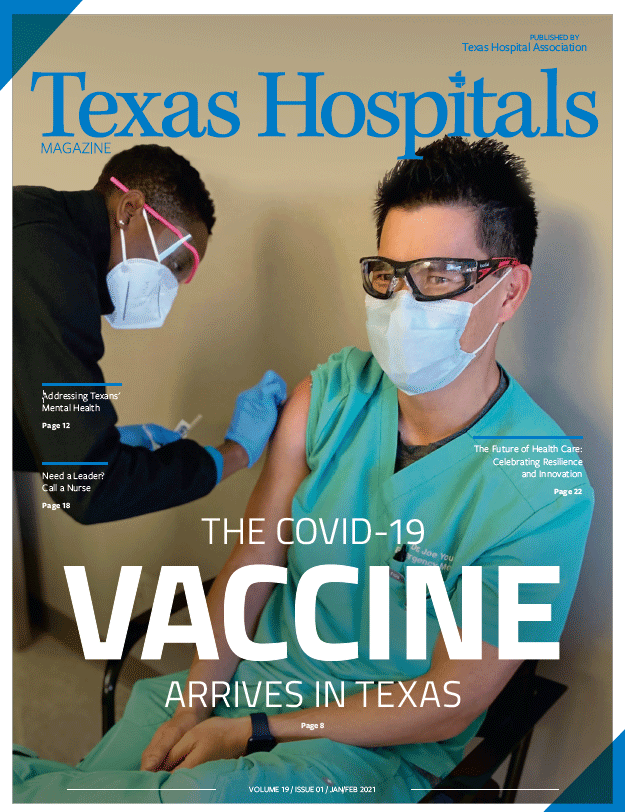
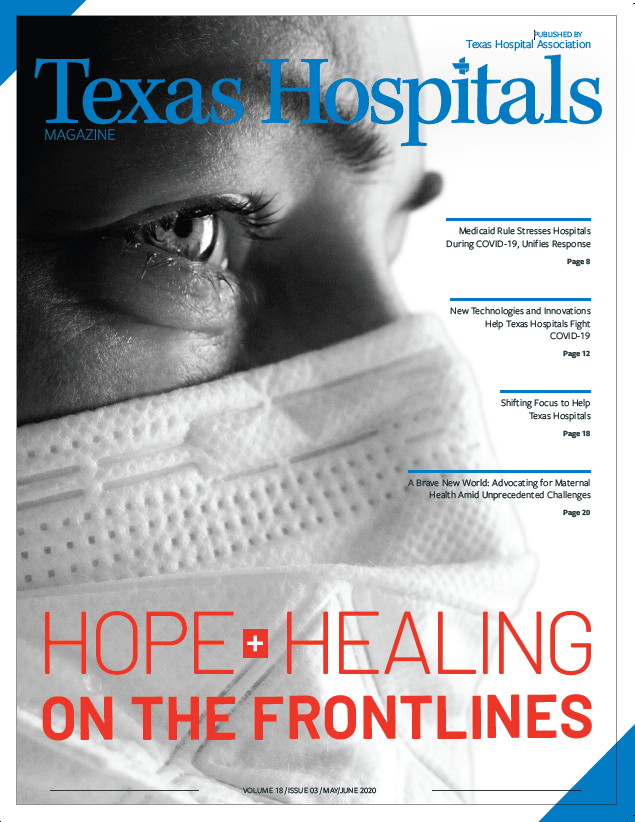
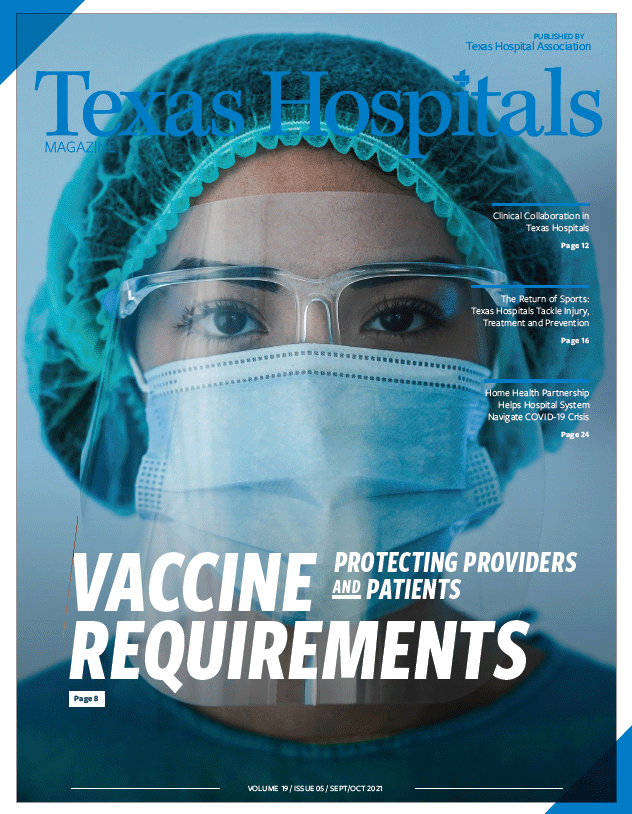
HISTORICAL MOMENTS FOR THE TEXAS HOSPITAL ASSOCIATION
The world outside THA’s doors has changed a lot in the past 77 years and so has the world inside. From new offices to new CEOs, THA has documented its significant milestones in Texas Hospitals.
Earl M. Collier Award
In February 1966, THA officially created its Earl M. Collier Award for Distinguished Hospital Administration. The award was named after Earl M. Collier, 35-year administrator of Hendrick Memorial Hospital in Abilene and past president of THA. The article announcing the award’s creation boasts, “Few, if any, hospital administrators in the nation can match his philosophy to ‘improve patient care’ which is consistently demonstrated in his acts and decisions.” Today, the Earl M. Collier Award is still bestowed upon an exemplary hospital administrator within a Texas hospital every year during conference.
THA’s New Offices
In May 2008, THA moved its headquarters to its current location in downtown Austin, within a block of the Texas Capitol. The strategically situated office location helped lobbyists conduct legislative visits, receive briefings and engage with local hospital advocates. The May/June 2008 Texas Hospitals magazine featured a full spread on the new office space with photos, maps and directions to the new office location.
THA Welcomes New CEOs
Since the organization’s founding, THA has had six CEOs at the helm. THA routinely used Texas Hospitals to introduce new leadership. Most recently, THA introduced John Hawkins as the sixth THA CEO in the January/February 2022 magazine issue.
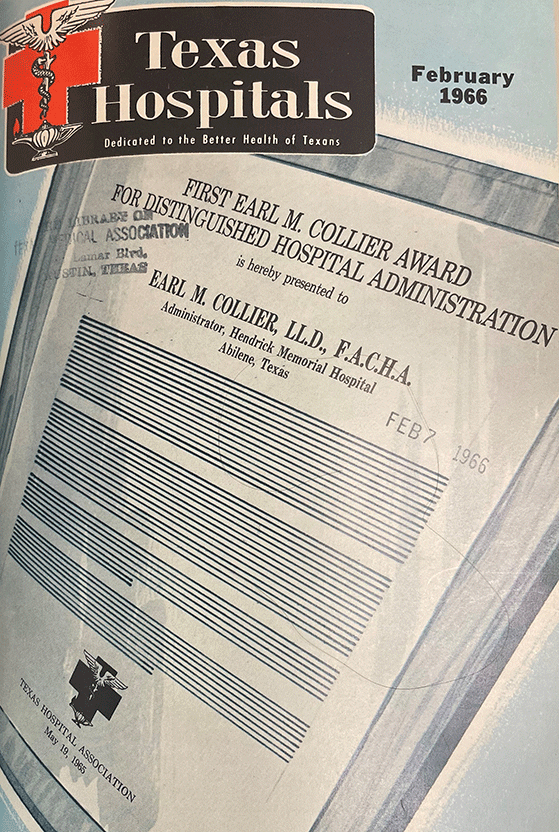
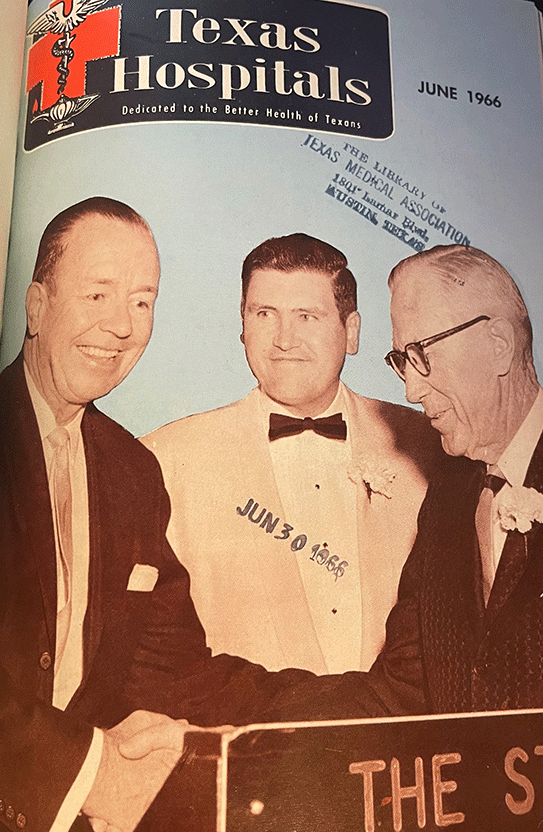
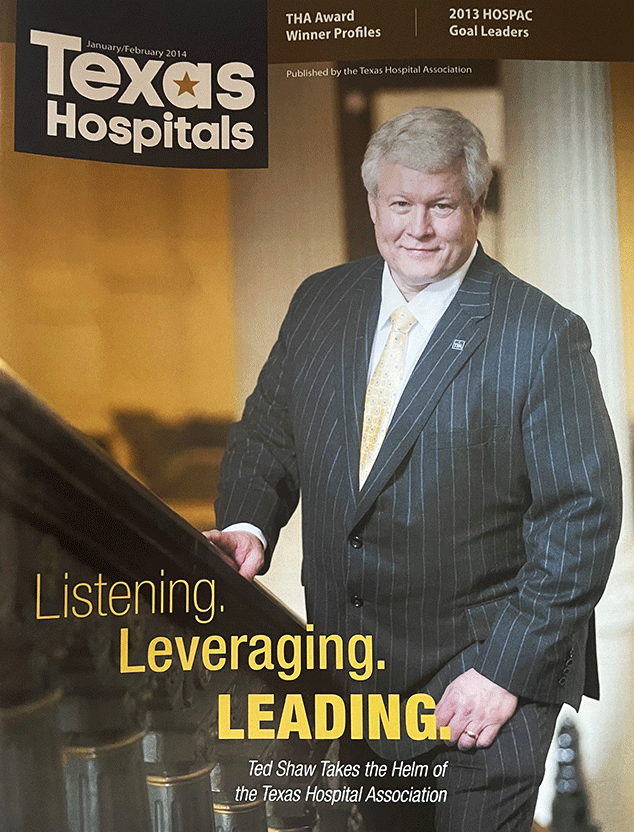
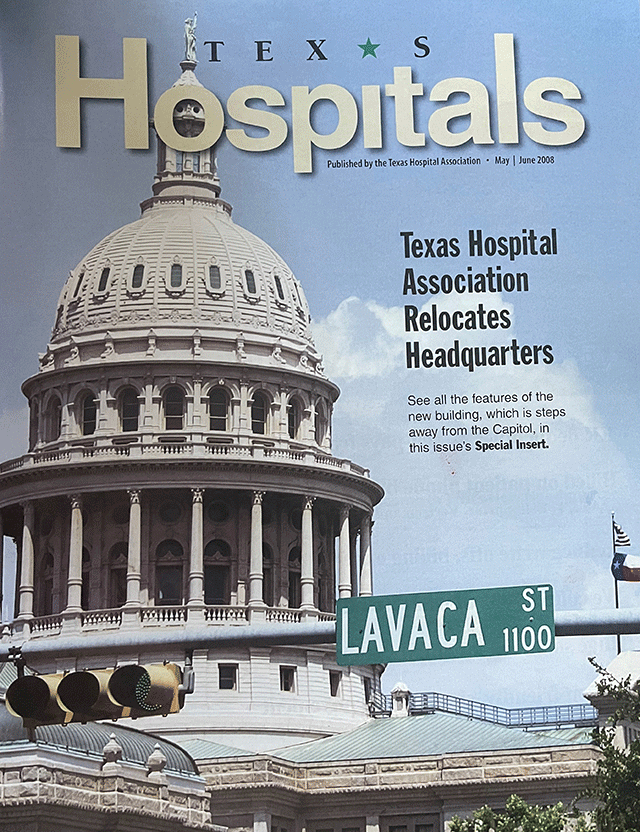
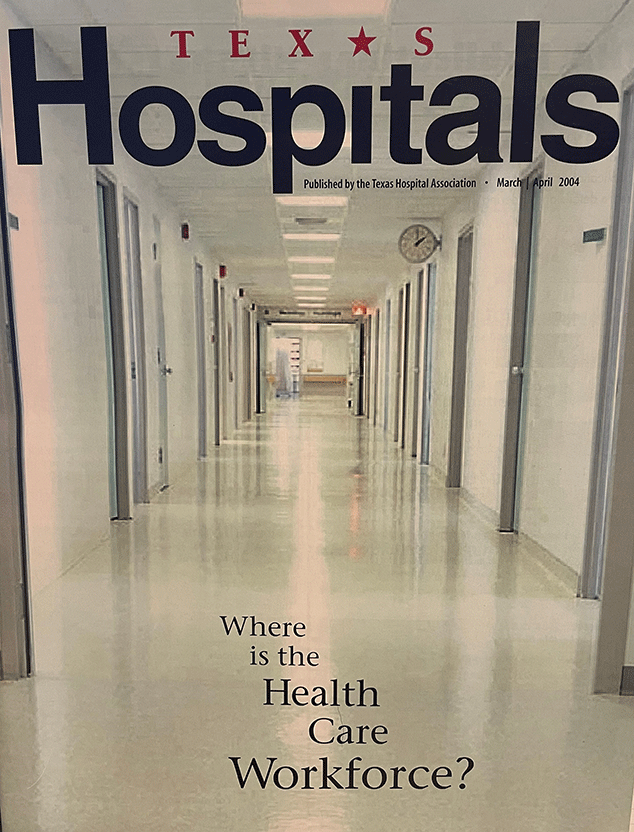
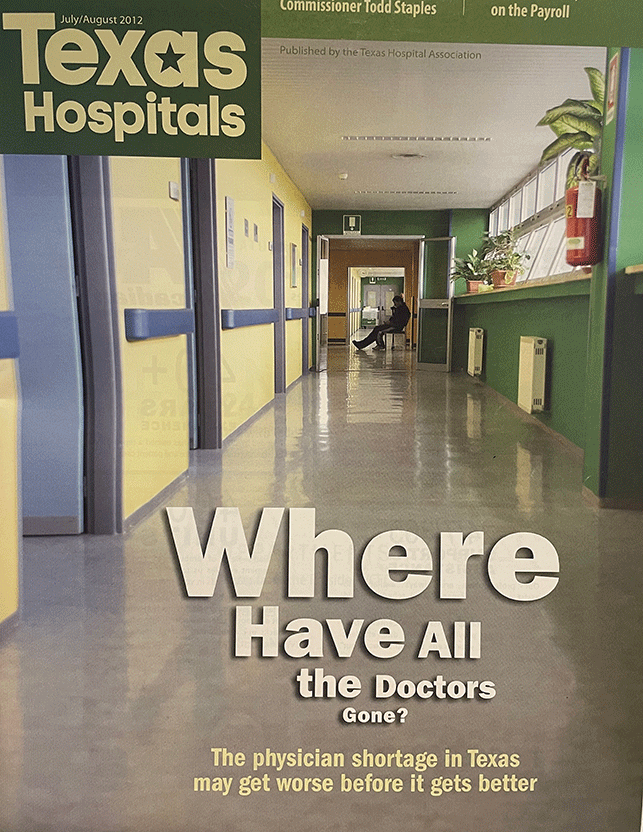
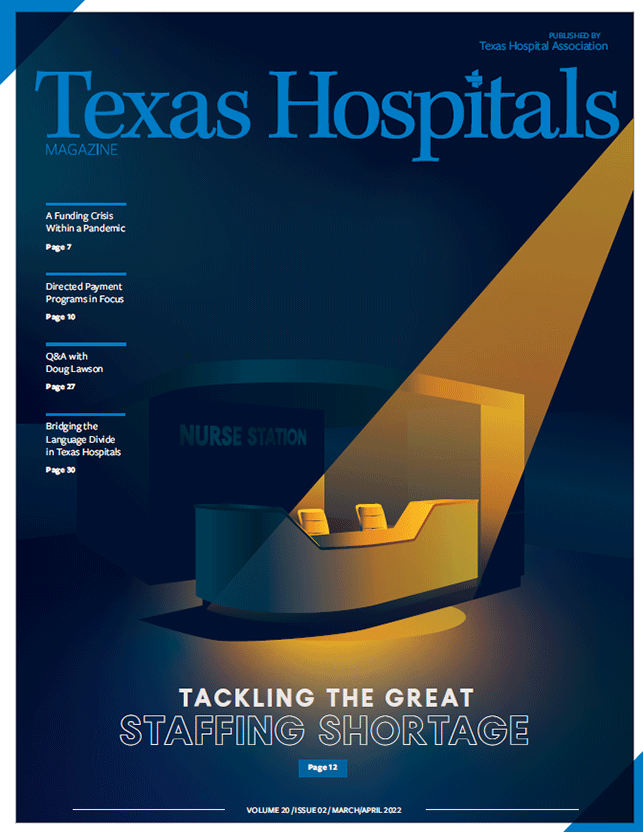
COVERING THE ISSUES THAT MATTER MOST
Workforce Shortages
Throughout the past 77 years, THA highlighted the health care issues that matter most to members within the pages of Texas Hospitals. Even in its earliest issues, persistent workforce shortages have been a key priority for THA, with several feature stories published on the topic.
A BETTER WAY
Like the industry it serves, THA is dedicated to looking ahead and improving upon what exists. Since the first edition of Texas Hospitals was published, electronic medical records have replaced paper charts, and once deadly diseases are easily inoculated. State, world and medical history unfolded within the pages of this magazine.
Health care and science is predicated on change and the ability to adapt to it. We believe that now is the time for us to evolve our communications to better suit the times and our members. We’re looking forward to bringing our readers the latest news impacting Texas hospitals as it unfolds, just in time for the 2023 Texas legislative session.
As it turns out, even the enthusiastic reception of change is documented in Texas Hospitals.
At the 32nd Annual THA Conference in 1960, W.R. McBee, then executive director of Blue Cross-Blue Shield of Texas, gave an opening speech later republished in the Texas Hospitals magazine. He opened by saying,
“It is almost a tradition in America that there is a better way to do everything and that we should devote our energies toward finding these better ways.”
Thank you, Texas Hospitals reader. Here’s to always finding a better way.
As steadfast as the magazine has proven to be over its lifetime, THA is excited to begin a new era in digital storytelling — one that will provide members with information and news faster than ever before. We encourage you to stay connected with THA through our new blog, The Scope, launching on January 2023 at www.tha.org/blog.
